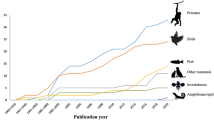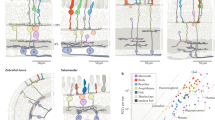Overview
- Editors:
-
-
Ron Douglas
-
Department of Optometry and Visual Science, City University, London, UK
-
Mustafa Djamgoz
-
Department of Pure and Applied Biology, Imperial College, London, UK
Access this book
Other ways to access
About this book
A question often asked of those of us who work in the seemingly esoteric field of fish vision is, why? To some of us the answer seems obvious - how many other visual scientists get to dive in a tropical lagoon in the name of science and then are able to eat their subjects for dinner? However, there are better, or at least scientifically more acceptable, reasons for working on the visual system of fish. First, in terms of numbers, fish are by far the most important of all vertebrate classes, probably accounting for over half (c. 22 000 species) of all recognized vertebrate species (Nelson, 1984). Furthermore, many of these are of commercial importance. Secondly, if one of the research aims is to understand the human visual system, animals such as fish can tell us a great deal, since in many ways their visual systems, and specifically their eyes, are similar to our own. This is fortunate, since there are several techniques, such as intracellular retinal recording, which are vital to our understanding of the visual process, that cannot be performed routinely on primates. The cold blooded fish, on the other hand, is an ideal subject for such studies and much of what we know about, for example, the fundamentals of information processing in the retina is based on work carried out on fish (e. g. Svaetichin, 1953).
Similar content being viewed by others
Table of contents (15 chapters)
-
Front Matter
Pages i-xiii
-
- Ellis R. Loew, William N. McFarland
Pages 1-43
-
-
-
-
-
- Mustafa B. A. Djamgoz, Masahiro Yamada
Pages 159-210
-
-
-
-
-
- Ron H. Douglas, Craig W. Hawryshyn
Pages 373-418
-
- Maureen K. Powers, Pamela A. Raymond
Pages 419-442
-
-
-
-
Back Matter
Pages 513-526
Editors and Affiliations
-
Department of Optometry and Visual Science, City University, London, UK
Ron Douglas
-
Department of Pure and Applied Biology, Imperial College, London, UK
Mustafa Djamgoz




